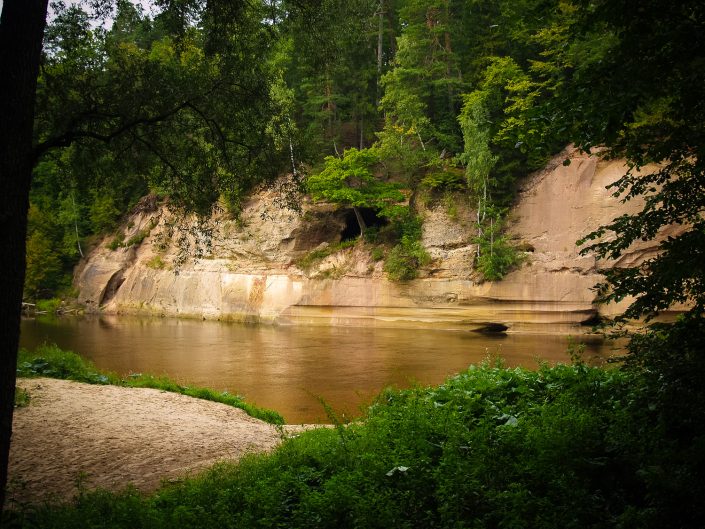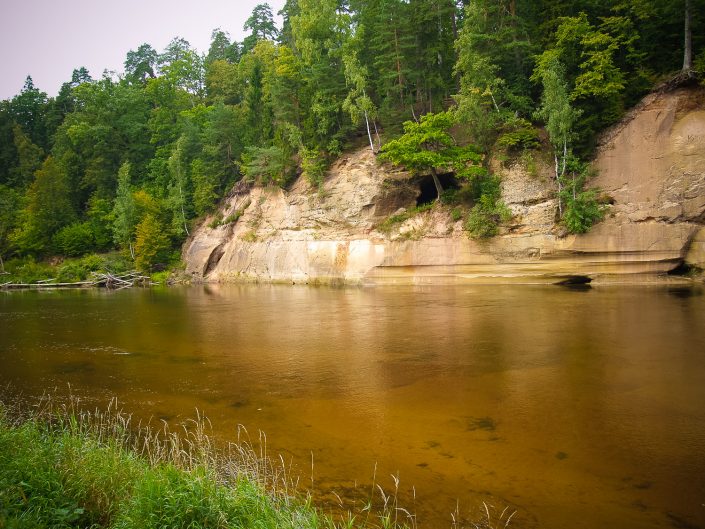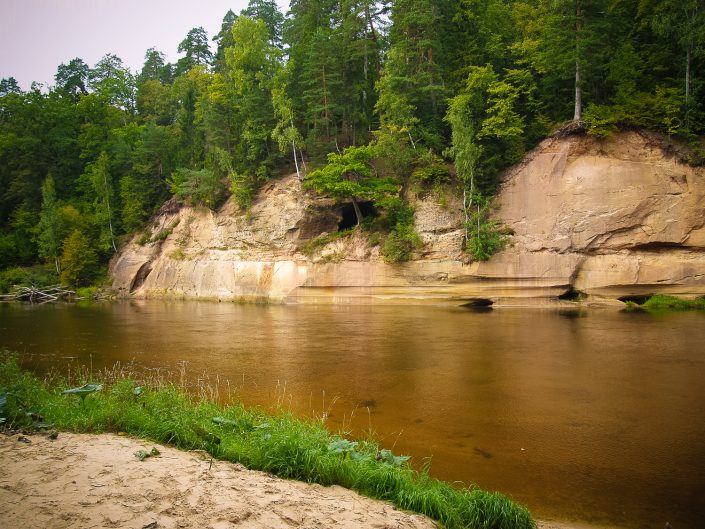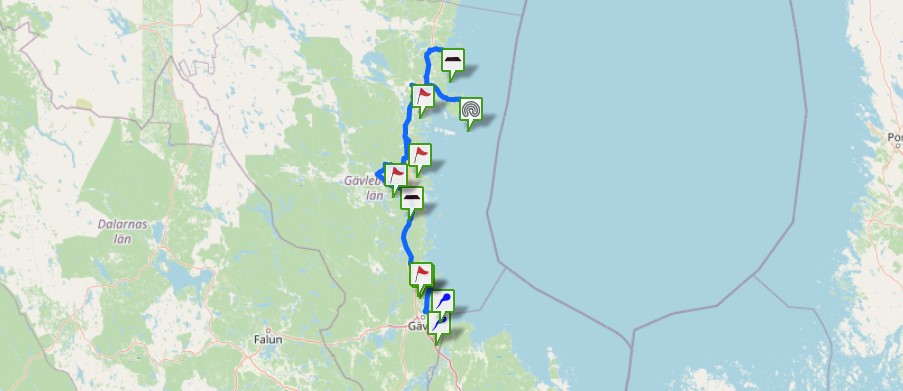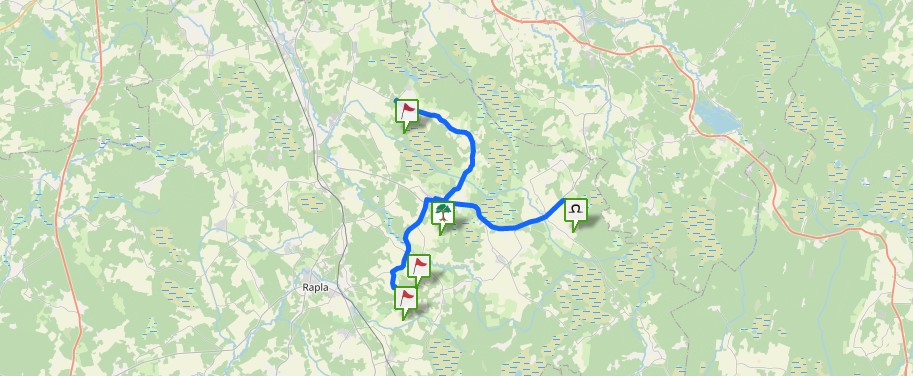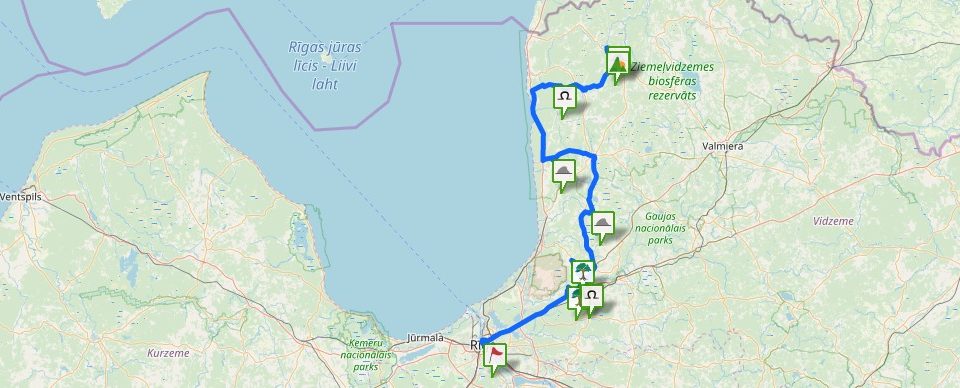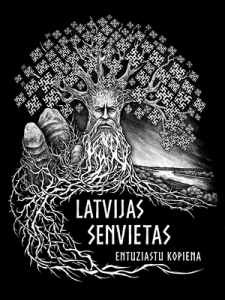The up to 15 m high and around 250 m long Devil’s Cave Cliff is situated in the lower part of Piķene Ravine washed by the Gauja River – the entrance of the cave is 8 m above the Gauja River. Until 1980 the cave could be accessed along the plank-way built for tourists, however, since building the pedestrian bridge across the Gauja River this plank-way has been liquidated and access denied to the cave. The cave can be viewed only from the opposite bank of the river. In the middle of the approximately one kilometre long Piķene ravine there is the so-called Small Devil’s Cave which is 10.2 m long, its name, however, is not rooted in the local folklore tradition, but rather has been introduced in later times. Not far from the Small Devil’s Cave the Wisdom spring flows out from the cliff where mothers used to wash their kids’ heads for them to become wiser, however, the first cliff in the Piķene ravine opposite to the oxbow lake is called Ram’s Forehead (Āboltiņš, Eniņš, 1979, 118). According to geologist Ojārs Āboltiņš, Krimulda Devil’s Cave started to form more than 10,000 years ago when a spring and the lateral erosion of the Gauja River started creating an empty space below the ground in the early devon age sandstone of the Gauja suite. At that time the river ran much higher – at the height of the present second terrace above the flood plain. 5000 years ago the Gauja River was already running at the level of the current first terrace, which means, at that time active formation of the cave had already finished (Āboltiņš, Eniņš, 1979, 121). Since the spring in the cave has run out, it has gradually filled with sand. Until the beginning of 1990s its length was 10.7 metres, its biggest width was 5.1 m, height up to 2.5 m, however, the area of the floor 45 m2. In 1992 the cave was partly undug and the cave dimensions increased as a result – the current total length of the Devil’s cave passages is 35 metres, the biggest width 7 m, height up to 4.7 m and the area of the floor – 140 m2 (Eniņš, 1995). According to G. Eniņš, there are six holes, but according to Andris Grīnbergs – nine 10 to 15 cm wide and up to 2 m deep holes, the so-called Devil’s Chimneys. Krimulda Devil’s Cave was first mentioned in records in 1857 under the name Teufelshöhle in the magazine published in German “Das Inland”. In the description next to the Devil’s Cave name there is also the name Biberhöhle, i.e., Beaver Cave which most likely is the former name of the Small Devil’s Cave. Similar to other caves in Sigulda vicinity, Krimulda Devil’s Cave has been a popular tourism site for aleady a century and a half. It can be concluded from both trip descriptions and tourist guides as well as the comparatively many postcards from the first half of the 20th century and trip photos as well as old maps where the cave is marked as a remarkable site. The oldest layer of folklore related to the cave fits into the set of the Devil’s legends. Apart from the name of the Devil’s Cave which has been appearing in publications since the middle of the 19th century, the first retold story about the Devil’s Chimneys was published in 1909 in the German language by Karl von Löwis of Menar and Frederich Bienemann, however, the legend most often repeated nowadays about the Devil who settled in the cave on his way from Jūdaži to Pabaži was published in 1930 by K. Ašmanis.These legends allow including Krimulda Devil’s Cave in the group of the mythological caves of Latvia connected with the Devil. Although the number of recorded texts is small, the legends arise interest due to the fact that they mention the geological features (Devil’s Chimney) of the cave as well as various unusual, however naturally originated sounds as evidences of the Devil’s presence (Laime, 2009).
